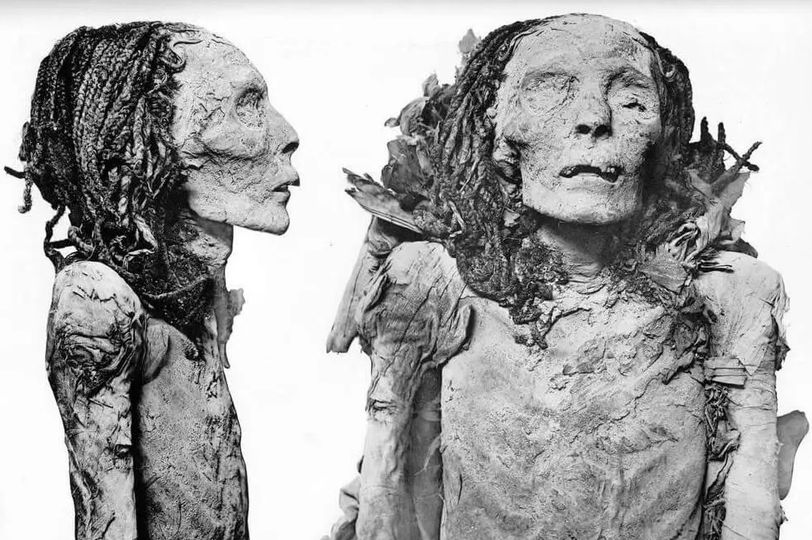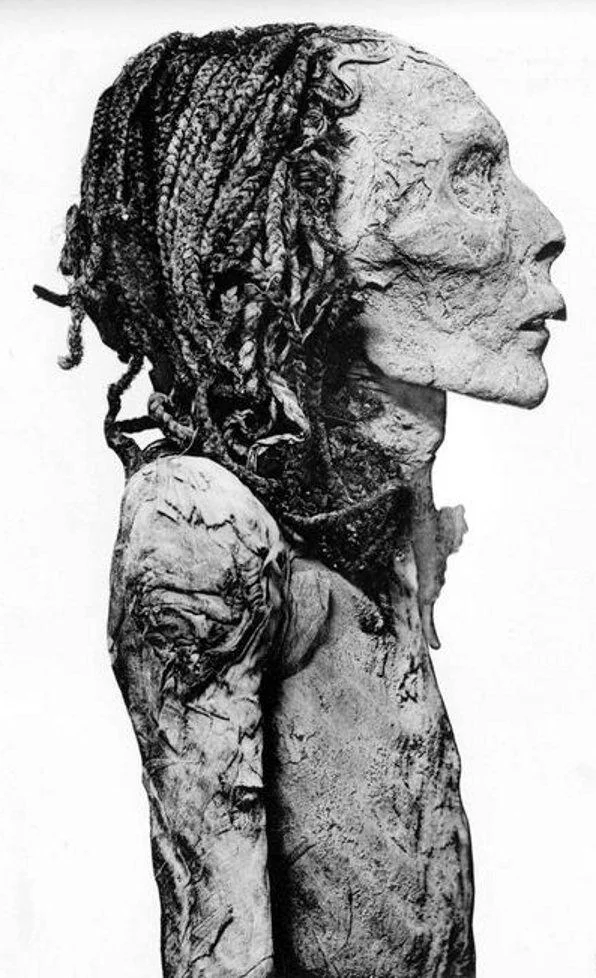Aged 65-75, AϜḍḏsᴇ NᴇჇʀṛჀʀɪ’s MᴜჍჍʏ, Found in TT320 with a thutmosid overbite and plaited hair

The mummy believed to be that of Ahmose Nefertari presents a fascinating glimpse into the life and physical characteristics of one of ancient Egypt’s royal women. Estimated to be between 65-75 years old at the time of her death, this mummy exhibits a rather noticeable protruding overbite. This dental feature is not just an isolated trait but appears to be a hereditary characteristic of the Thutmosid lineage, suggesting a genetic continuity among the royals of that era.
Her hair, described as fine and wavy, has been meticulously plaited and includes additional extensions made from human hair. This elaborate hairstyle indicates the importance of appearance and the use of hair extensions even in ancient times, reflecting the high status and the cultural practices surrounding royal grooming and adornment.

The mummy was discovered within the Royal Cache, a hidden repository of royal mummies. This cache, technically known as TT320 and previously referred to as DB320, is an ancient Egyptian tomb located adjacent to Deir el-Bahari in the Theban Necropolis, across the Nile River from the modern city of Luxor. The discovery of this cache has provided significant insights into the funerary practices and the measures taken by the Egyptian priesthood to protect their royal dead.
During a period of political turmoil and tomb robberies, the Egyptian priesthood took the strategic decision to relocate the mummified remains of New Kingdom royalty to safer locations. It is believed that Ahmose Nefertari’s mummy was among those moved to TT320 for protection. This reburial effort was aimed at preserving the sanctity and safety of the royal mummies, which were vulnerable to looting and desecration.
The Royal Cache itself is a remarkable archaeological find, offering a wealth of information about the 18th and 19th Dynasties. The tomb housed numerous royal mummies, including those of pharaohs, queens, and other nobility, thereby serving as a crucial link to understanding the genealogy and succession of ancient Egyptian rulers.

Ahmose Nefertari holds a prominent place in Egyptian history. She was the wife of Pharaoh Ahmose I and played a vital role in the early 18th Dynasty. Revered as a matriarch and a powerful figure, her deification after death further underscores her significant influence and esteemed position within the royal family. The preservation of her mummy in the Royal Cache highlights the reverence and care bestowed upon her by subsequent generations.
In conclusion, the mummy thought to be Ahmose Nefertari not only provides valuable insights into the physical attributes and life of a royal woman but also illuminates the broader cultural and historical contexts of ancient Egypt. The discovery in the Royal Cache of TT320 enriches our understanding of the intricate measures taken to protect and honor the dead, ensuring that the legacy of Egypt’s royalty continues to captivate and inform modern scholarship.